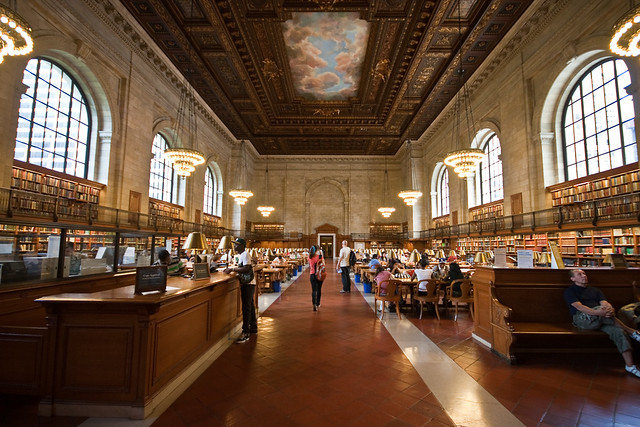Last Tuesday I found myself in New York City, with a few hours in the afternoon to spend. I’d arranged to meet my Vergil, Jon Bruner, at the New York Public Library. Awaiting Jon on the steps, I felt I’d stepped into a W.H. Whyte map:
The Library is, of course, an astounding achievement, not just a monument to the democratization of knowledge, but an ongoing project of the same. The openness of the reading rooms and the easy access to the collections are obvious. And my god, is it astoundingly beautiful.

But let me back up a week and mention the last time I came across the NYPL. A few years ago, it would have been in the course of acquiring images from their collection; this time it was much more exciting.* The NYPL map vectorizer is a really cool tool to extract data from paper maps and encode it as geographical information that can be layered with hundreds of other layers and kinds of information.
What’s more, it’s a totally open-source project on GitHub, so you can tweak it to your purposes or contribute to improving the original project. This is democratization of research at its highest. Given the range of what NYPL has put on GitHub, they are taking ‘public’ very seriously.
Changing gears
The next stop after the NYPL was the (Morgan Library and Museum)[http://www.themorgan.org/home.asp]. An utterly flabbergasting place, it was J.P. Morgan’s personal study and library, since converted into a research library and museum, with an appendix by Renzo Piano. The presence of so many historically mindblowing and phenomenally valuable things (three Gutenberg Bibles! manuscripts from Percy Bysse Shelley to Blowin’ in the Wind! I could go on, but I’d break down in tears) in such a setting was almost too much.
(As an aside: if you go, be sure to ask the security guards—they are very well-informed—about the staircase. I won’t spoil the surprise.)
(As an aside: if you go, be sure to ask the security guards—they are very well-informed—about the staircase. I won’t spoil the surprise.)

It’s good to be the richest man in America (and to have Belle da Costa Greene managing your collection and acquisitions).
Between the NYPL and the Morgan, we have two wonderful and very different libraries, mappable onto (let’s be honest—ancient Athenian) notions of democracy and oligarchy. But they called to mind a third library, George Washington’s library at Mount Vernon.
Washington was, according to the Atlantic, America’s wealthiest president. Yet his library had a mere 1,300 volumes (1,287 + maps, charts, etc, to be specific). Mine has about 700 (probably a few more; I haven’t updated my catalogue in a systematic way in a while). Mount Vernon is about 7,000 square feet; my house is about 3,200. You see where I’m going with this: One of the wealthiest men in America, and our first president, had a standard of living (hey, can you think of a better measure than library and living space?) broadly comparable with mine; the multiplication and spread of wealth and knowledge brought about by the Industrial Revolution is embodied in these three buildings.
*Your excitement level may vary.


No comments:
Post a Comment